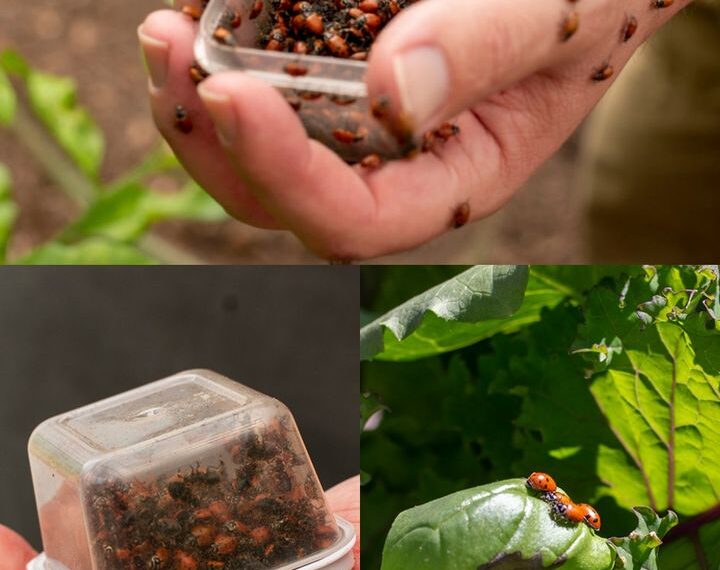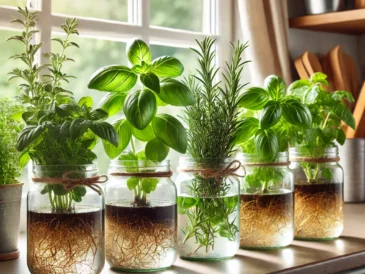1. Choose the Right Time to Release Them
Timing is everything. The best time to release ladybugs is in the early evening or late afternoon. This is when temperatures are cooler, and ladybugs are less active, making them less likely to fly away immediately. Releasing them during the hottest part of the day may cause them to scatter in search of shade or water.
In addition, wait for the right season. Ladybugs are most effective during spring and early summer when aphids and other pests are plentiful. Releasing them at the right time ensures they have enough food to keep them around.
2. Water Your Garden Beforehand
Ladybugs need water, and if your garden is dry, they’ll leave in search of a source of moisture. Before releasing them, lightly water your garden. This will help provide them with both water and a humid environment, which they prefer. Be careful not to overwater, though, as too much water could wash them away.
3. Release Them Near Food Sources
To keep ladybugs in your garden, they need an abundant food source. That means releasing them near aphid-infested plants or other pests that they can feed on. Aphids often gather on the undersides of leaves, so look for plants that are already suffering from infestations and release the ladybugs directly onto them.
Pro Tip: If you don’t have a lot of pests when you release your ladybugs, they might fly away to find food elsewhere. To encourage them to stick around, you can delay your pest control methods (like spraying water or neem oil) and let the pests accumulate for a little while. This way, the ladybugs will have plenty to eat when they arrive.
4. Create Shelter for Them
Ladybugs prefer to stick around where they feel safe. Providing them with shelter, such as small logs, rocks, and garden plants, gives them places to hide during the heat of the day or when it rains. Tall plants or shrubs are ideal spots where ladybugs can seek refuge. Creating a variety of garden habitats can ensure they feel comfortable and protected.
5. Avoid Using Pesticides
If you’re going the natural route with ladybugs, avoid using any kind of pesticides in your garden, even organic ones. Insecticides don’t discriminate between pests and beneficial insects like ladybugs, so using them can kill off your ladybugs before they have a chance to control the pests.
Even natural pesticides, such as neem oil, can harm ladybugs. If you have been using pesticides, make sure to rinse off your plants thoroughly before releasing the ladybugs to avoid poisoning them.
6. Feed Them While They Settle In
If you’re releasing ladybugs in a garden with only a small pest problem or during a time when there aren’t many pests available, it’s a good idea to provide them with some extra food while they settle in. Ladybugs love a mixture of sugar water or honey water, which you can spray on plants as a supplemental food source. Just mix equal parts sugar and water, and mist it onto the leaves where the ladybugs are. This helps encourage them to stay in the area and gives them the energy they need to start hunting pests.
What Happened After Releasing 600 Ladybugs?
The first thing I noticed after releasing my 600 ladybugs was how quickly they dispersed into the garden. Many of them went directly to the plants with the most aphids, while others explored different parts of the yard.
After a few days, I could already see the impact. The aphid populations had decreased significantly, and my plants started to look healthier. What surprised me the most was how efficient the ladybugs were in controlling pests, even though I initially thought 600 would be too many for my small garden.
One challenge, however, was that some of the ladybugs flew away, despite my best efforts. I realized that it’s natural for some to leave in search of new environments, but enough stayed behind to make a noticeable difference.
Final Thoughts
Buying and releasing live ladybugs was a fun and rewarding experience, and it made a huge difference in my garden’s pest control. Not only did I reduce the need for chemicals, but I also helped support the local ecosystem by welcoming beneficial insects. If you’re looking for a natural way to control pests and improve your garden’s health, ladybugs are a fantastic option.
Just remember to release them at the right time, provide them with plenty of water and food, and avoid using harmful chemicals. With a little care, ladybugs can stick around and become a long-term ally in your gardening efforts.




